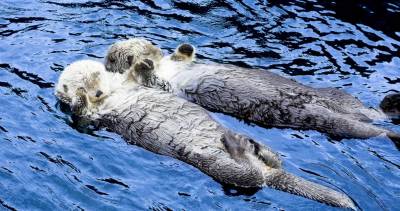Vancouver Symphony Orchestra explores the sounds and stillness in The Idea of North
Under new assistant conductor William Rowson, the ensemble heads for the aurora borealis with an adventurous program
Frozen tundra stretching off into the far distance. A sparkling night sky, with fluorescent curtains of light shimmering down from space. Endless freshwater lakes brimming with big trout and char. The hushed stillness of snow falling in a birch forest. If these are the images that north brings to mind, the Vancouver Symphony Orchestra has a concert for you.
The Idea of North, the latest installment in the VSO’s Symphony at the Annex series, takes its name and at least some of its inspiration from Glenn Gould’s remarkably prescient CBC Radio documentary of 1967, in which the great pianist turned his curiosity toward the impact of climate and topography upon the psyche. In it, Gould applied Baroque compositional strategies to radio production, telling his story through the contrapuntal layering of different voices rather than as a linear narrative.
And while the VSO hasn’t gone full-on Gould with this Idea of North, William Rowson explains that there will be some cross-talk between the four composers featured on the bill.
“I hadn’t thought about it too, too much—in that way, anyway,” the VSO’s recently anointed assistant conductor explains, in a telephone interview from the symphony’s downtown offices. “But it does strike me that there are two pieces in our program—Kaija Saariaho’s Lichtbogen, about the northern lights, and Anna Thorvaldsdottir’s Aequilibria—that are both about the sky.
“They both have this great sense, for me, of vastness and stillness,” he continues, after noting that it would be interesting to fade in and out between the two pieces, in the same way that Gould combined his interview subjects’ stories. “It’s a sense of a huge, open space. If I were to think of composers from the classical canon who went there, I’d think of moments from an Anton Bruckner symphony, or maybe the music of John Adams.”
Rowson comes by his love of wide-open spaces honestly. “I grew up in Saskatchewan,” he reveals, “so when we were on our farm, I could look out and see just vast amounts of land, all the way to the horizon. And Harry Stafylakis has a piece on this program, Arc of Horizon, which is about the idea that no matter how hard you try to go to the horizon, it’s always, of course, distant.”
One might think that the fourth work on the program, Ana Sokolović’s four-part Jeu des Portraits, should also have a landscape component. After all, it was written just four years after Sokolović moved from Serbia to Montreal, at a time when she was still adjusting to life in a new and considerably less temperate environment. It also pays homage to four older Québécois composers who were themselves presumably shaped by Eastern Canada’s cold winters, but Sokolović says that her primary intent was purely musical.
New VSO assistant conductor William Rowson.
Commissioned for the 30th anniversary of the Société de Musique Contemporaine du Québec, in 1996, Jeu des Portraits draws on extant scores by Rodolphe Mathieu, Jean Papineau-Couture, Serge Garant, and Claude Vivier, but each of its historical components has been reimagined in Sokolović’s own, distinctive musical language.
“For each movement, the process was different,” she explains from her home in snowy Montreal. “I didn’t want to compose their pieces; I wanted to compose my pieces, through their personalities.
“The best compliment I had for this piece was from the composer John Rea, who told me it was like Les Demoiselles d’Avignon, a painting by Pablo Picasso. Each of the demoiselles, the ladies, was a different painter. One was El Greco, one was Degas… I don’t remember all of them. But they’re all Picasso, actually. Picasso showed himself, but through the energy of others. So that can explain this piece, which has four autonomous movements in different styles or different musical approaches—but all these musical approaches are mine.”
Sokolović recalls being shocked that Mathieu, whom she considers Quebec’s first truly modern composer, was not revered or even remembered by her Québécois colleagues. “It was very interesting, their reaction,” she says. “They said, ‘How did you happen to write this? How did you happen to know these people?’
“The older composers, nobody knew anything about them,” she adds. “But for me, coming from the eastern world where we respected older composers, it was normal for me to do this. When I had this commission from SMCQ, I already knew who were the premier modern composers in Canada—and even my Canadian fellows, they didn’t know. It was very curious.”
Sokolović attributes at least some of this cultural amnesia to the facts of life in a relatively new country. Looking so steadily to the future, she suggests, Canadians disregard the past. “We don’t push enough, in the schools, this obligation to know our cultural heritage,” she comments.
But is the northern experience also reflected in this phenomenon? Every winter, snow erases the past, and every spring new shoots emerge—making this spring a fine time to contemplate how “the idea of north” can be a source of eternal renewal, surprise, and beauty.
The Vancouver Symphony Orchestra presents The Idea of North at the Orpheum Annex on Saturday (March 25).















Comments